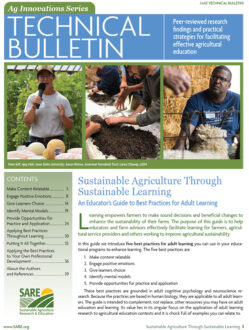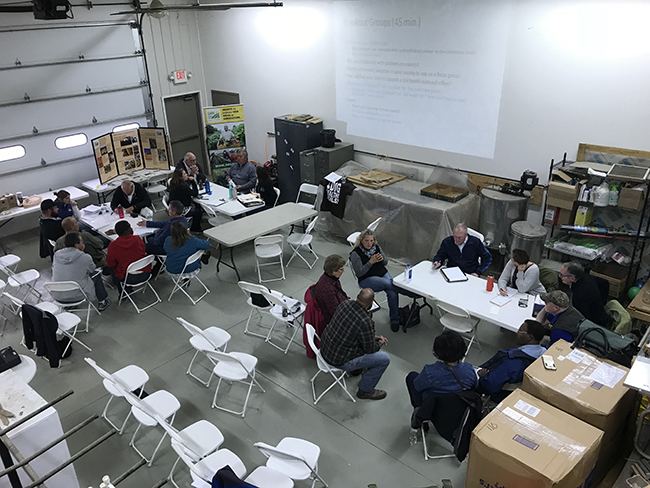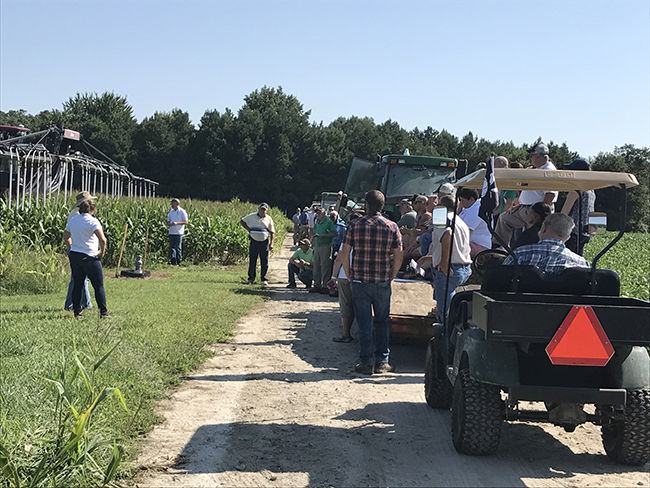Provide Opportunities for Learners to Link the Content to their Prior Experiences and Knowledge
One of the most powerful ways to help adult learners retain new information is by making it relatable to their past experiences or existing knowledge.
The Science Behind the Practice
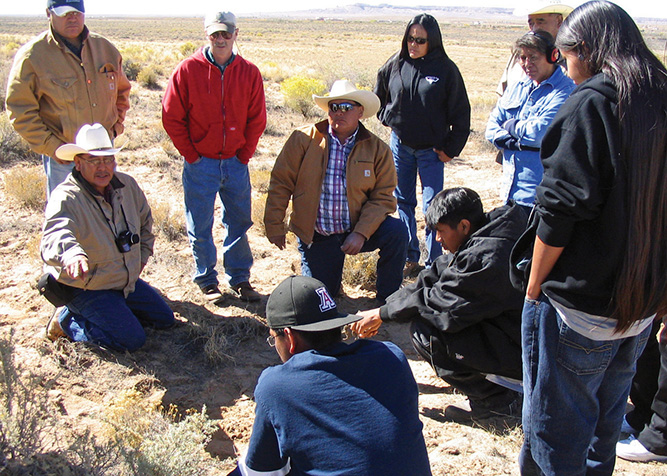
As an agricultural educator you may already be using this best practice on a regular basis. When you introduce a new topic, do you ask participants, “How many of you have had experience with …?” or “What do you know about …?” Do you find that farmers first rely on their own experiences to make sense of new concepts? Or that farmers tend to make comparisons between what they have done in the past with the new method or technology you are helping them learn? Do you use their comparisons to adjust your teaching? If yes, then you appreciate the powerful impact that linking new content with prior experiences and knowledge has on learning.
This tendency for adults to make sense of new information or experiences by making comparisons to what they already know or have done can be explained by how the human brain learns. Learning creates long-term memories that physically change the brain (Lindenberger and Lövdén 2018). To efficiently manage the multitude of long-term memories that it creates, the brain organizes them into neural networks and establishes patterns among these networks (Sloan and Norrgran 2016). When your brain processes a new experience or encounters new information it creates neural patterns that capture the attributes of the experience or information. These neural networks are located in different parts of the brain, depending on which attributes of the experience they capture. For example, consider your favorite song. The lyrics are stored in verbal regions of the brain, and vocalization of the lyrics are in the motor regions. The melody is stored in regions responsible for music, and the emotions you attach to the song are stored in emotion centers. The complete pattern of these various networks is what constitutes a memory, in this case the memory of your favorite song. When you recall the song, all the interconnected networks join up as you start singing.
Learning creates long-term memories that physically change the brain.
As you accumulate experiences, knowledge and skills, the brain compares new patterns of neural networks (or memories) with existing ones, and it builds connections between memory networks that have similar attributes. This first happens unconsciously. When there is an overlap or matching of patterns, the pre-existing memories are reactivated (Schlichting and Preston 2014). This is why you may hear a new song and recognize that the melody of its refrain sounds a lot like the refrain in your favorite song. When new connections and expansions of neural networks become strong through recall and practice, learning has occurred.
This phenomenon of how memories are created and associated with each other explains why, when you introduce new content to farmers, they will spontaneously recall prior experiences or knowledge that relate to the content. For example, a discussion of family dynamics and succession planning may prompt some farmers to recall their own experiences of how they inherited the family farm any number of years ago.
Because each farmer has a unique set of prior experiences and knowledge, the connections they make to new content will be unique as well.
Because each farmer has a unique set of prior experiences and knowledge, the connections they make to new content will be unique as well. Although farmers will spontaneously make these connections, you can use a variety of strategies to facilitate this process in ways that benefit learning. Generally, while developing a new curriculum or learning interaction, include opportunities for farmers to share the connections they see between the new content and their existing experiences and knowledge. For both individuals and groups, examine the nature of these connections to identify gaps in their experiences, knowledge or skills. Identify both commonalities in experience and knowledge levels, and where notable differences exist. With this information you can tailor your content to participants’ backgrounds, levels of experience, types of experience and the nature of knowledge they bring to a learning event.
At times, farmers may lack prior experiences or knowledge that directly relate to the new content, so they might struggle to make meaningful connections. This may be particularly apparent during the initial stages of learning. You can take advantage of the brain’s natural tendency to make comparisons by using analogies to experiences and knowledge in other aspects of learners’ lives to help them form links to the content. For an example of how one educator from University of Maryland Extension uses a relatable, non-agricultural analogy to help farmers appreciate the undesirable effects of excessive soil tillage see the profile “Imagine You’re Building a House.”
You can take advantage of the brain’s natural tendency to make comparisons by using analogies to experiences and knowledge in other aspects of learners’ lives to help them form links to the content.
Wrap Up
As adult learners, farmers enter learning with a wide range of experiences, knowledge and skills. Their brains are full of long-term memories that serve as scaffolding for new learning. This best practice is about taking advantage of the tendency for learners to compare new content with things they have already experienced and know. When you are aware of the connections farmers make between new content and their lives you can make the content more relatable and target the curriculum to address gaps in experience and knowledge.
How to Apply the Best Practice
Strategies for providing opportunities for learners to link the content to their prior experiences and knowledge.
- Before a learning program begins, use a needs assessment or registration survey to ask farmers about their prior experiences, knowledge and skills. For efficiency, use an online form. While this strategy is used by many educators to design more effective and efficient programs, it is also helpful for learners. In completing the pre-program questions, farmers begin to reflect on their prior experiences, tap into their knowledge and skills, and assess their strengths and weaknesses. This primes them to make new neural connections for learning. Information gathered from participants may include their:
- Level of knowledge about content topics
- Skill in target activities
- Level and type of experiences using information or tools related to the content
- Before a group learning event, recruit one or more farmers and ask them to be prepared to share their experiences related to the content and to take questions as part of the event.
- During your interactions, ask learners to share their past experiences or current practices related to the content. Hearing the experiences of others has a learning potential as participants mentally compare their experiences to those of others. If the situation does not allow for sharing, ask learners to reflect individually and make notes. Examples of what to ask and when include:
- Before a field event or tour, or at individual tour stops: “Does anyone have an experience about marketing the crops we’re about to see that they’d like to share?”
- When a topic or task is introduced: “What’s been your experience calibrating sprayers? What resources do you use? What have you had the most difficulty with? Have you developed any helpful tips others might use?”
- Before a learning activity begins: “Take a few minutes to think about one enterprise on your farm and make a list of all the inputs needed for that enterprise.”
- Ask participants to identify their best experience, worst experience and lessons learned related to the content and to share with others, either in a small-group or whole-group setting. A similar prompt is, “What worked well and not so well?” Follow with a discussion of commonalities across experiences, notable differences and what contributed to success or failure.
- At meetings or onsite events featuring peer learning among farmers:
- Provide an opportunity for the host or guest farmer to share their experiences related to the learning objectives. Give the farmer guidance about the information you would like them to convey to help keep their sharing well focused.
- Allow participants to share situations they know of or have experienced that are similar to the host’s or guest farmer’s situation. In some situations, grouping farmers based on experience or knowledge level (e.g., beginner, novice, experienced) may be helpful for such discussions. In others, pair less experienced farmers with more experienced farmers who can serve as mentors or coaches regarding observations.
- Encourage participants to ask the host or guest farmer about the types of connections they made between their own experiences and the new method or technology when they initially started to learn about it. For example, what post-harvest storage and handling challenges were they most concerned about addressing when they began considering new storage technologies?
- Most of the strategies listed above can be adapted for use in online formats. For instance, you can:
- Recruit farmers in advance to share their experiences as part of a virtual event
- Extend a round-robin invitation to all participants to share experiences or respond to experiences shared by others
- Incorporate mini breaks with quiet or music to give participants a few minutes to reflect on their experiences and make notes
- Organize small-group discussions in breakout sessions if the platform permits. Include a well-defined assignment or discussion prompt that encourages participants to make connections between the content and their own knowledge and experiences. An educator or peer discussion leader for each breakout group will increase comfort and participation.
Review Questions and Reflections
- The human brain spontaneously compares attributes of new experiences with neural network patterns established for prior experiences. In your own words, what is the significance of this for learning?
- Think of something notable you learned within the past year. Is what you learned similar to either experiences, knowledge or skills you already had? If yes, how are they similar? Does your new learning influence how you think about your earlier experiences or the knowledge and skills you already had?
- Think of a future learning event or program you are planning. Describe three specific ways you could provide opportunities for learners to make connections between the new content and their own prior experiences or knowledge.
- Identify one specific topic or skill that learners tend to struggle with. What analogy can you make between that topic or skill and something else in learners’ lives that would help them to grasp the topic or skill?
Profiles
Imagine You’re Building a House
Nevin Dawson, Northeast SARE (University of Maryland Extension)
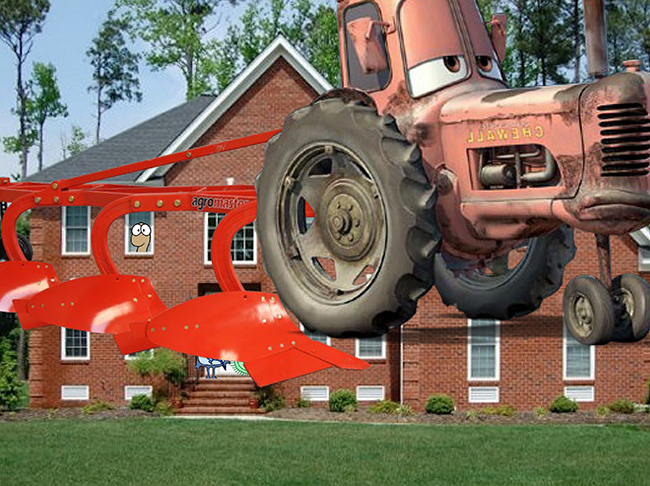
Nevin Dawson used a simple analogy to convey the implications of excess tillage on soil health during educational programs he ran for farmers and agricultural service providers. Adapting an idea he first heard in a presentation by USDA NRCS staff, Dawson created an animated slide that compared building good soil health to building a strong house. Soil organisms like fungi, bacteria and other micro- and macro-organisms contribute to building a strong, resilient soil structure, akin to a strong “soil house of bricks.” Tillage can undermine and break down soil structure, just as a bulldozer can knock down a solidly built brick house. This simple analogy turns an ordinarily complex concept, soil health, into one that is more easily understood and meaningful.
For more information
SARE project: Building soil health in Maryland through agricultural service provider education (2017)
Read more: https://projects.sare.org/sare_project/neumd17-001/
Relatable Analogies When Learners Have Limited Experience
Dan Severson, University of Delaware Cooperative Extension
How do you make new information relatable to beginning farmers when many of them are coming from a non-agricultural background? Dan Severson and his colleagues ran into this challenge when they hosted a series of beginning farmer workshops starting in 2017. Many of the new farmers who enrolled in the course did not have a farming background, so their agricultural experiences were limited. To facilitate learning, Severson and his colleagues started out by using analogies to familiar experiences.
One topic that was foreign to many participants was interpretation and implementation of soil analysis reports. The educators made the analogy that interpreting and following soil report recommendations is like reading a recipe and baking a cake. You need the ingredients in the recipe in the right amounts to make a good cake—leaving out the baking powder will result in a deficient cake. Likewise, soil pH at the right level and nutrients in the right amounts are needed to produce good crops; a pH that is too low or inadequate nitrogen will result in less than optimum production.
When teaching about direct marketing, the educators compared the importance of setting up an effective marketing display to staging a house for sale. You want it to be attractive and to invite entry, with the best features up front. Once you get people into the house, you want to maintain their interest so they linger and don’t leave quickly.
For more information
SARE project: Beginning farmer workshops (2017)
Read more: https://projects.sare.org/project-reports/nede17-001/
Using Small Groups to Make Cover Crop Strategies More Personal
Jason Challandes, Northeast SARE (Delaware State University Cooperative Extension)

Jason Challandes, Delaware State University Cooperative Extension 
Jason Challandes, Delaware State University Cooperative Extension
Cover cropping is a recognized way to improve soil health. It is also a strategy that must be customized to each farm’s soil, cropping system and management for it to work successfully. This is why, when Jason Challandes coordinated a multi-year education project for farmers and agricultural service providers on cover cropping, he made sure participants had the opportunity to share their experiences in small groups.
First, participants learned concepts and practical advice for application through workshops and field days. At the end of each meeting, Challandes offered small-group discussions that focused on farmer case studies to help participants apply what they were learning to their own situation. The discussion groups usually included a mix of farmers and service providers. In the small groups, participants discussed the cover cropping opportunities and challenges presented by the cases and their suggestions for addressing them. Analyzing cases prompted learners to draw on their existing knowledge and link it to new information to make critical judgments. Discussions often included participants’ stories of similar situations they had encountered. Small groups then debriefed with the whole group about their conversations.
This process helped farmers improve their ability to weigh multiple cover crop decision factors and helped service providers develop strategies for better advising farmers in the future. As one service provider said, “So much amazing information. Lots of great research and ideas to incorporate into local operations.”
Challandes later adapted this strategy for virtual learning. After a presentation by a content specialist about soil health/cover cropping solutions in various farm settings, participants broke into virtual small groups with a moderator where they discussed case studies and developed questions to help farmers choose cover crops. The whole group then reconvened and moderators shared results from the discussions. Elements that Challandes considered keys for success in the virtual format included:
- Informing participants in advance that there would be breakout discussion groups
- Encouraging participation in breakouts, but allowing participants to listen only if they felt uncomfortable sharing
- Recruiting breakout group moderators in advance
- Providing a well-defined focus, goal or task for the discussion groups
- Including ample time for both the breakouts and reporting back
For more information
SARE project: Cover crops and soil health training for agriculture service providers in Delaware and the Eastern Shore of Maryland (2017)
Read more: https://projects.sare.org/project-reports/nedsu17-001/
Guided Reflections to Connect New Information and Past Experience
Olivia Saunders, University of New Hampshire Cooperative Extension
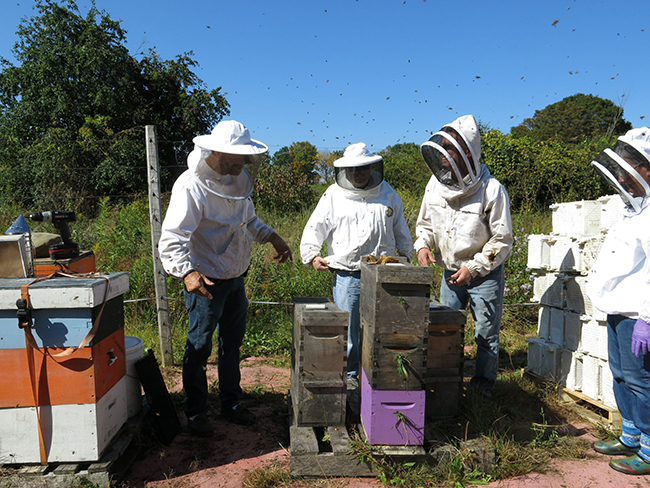
When learners come into an event with a high level of existing experience, knowledge and skills, giving them the chance to reflect can be a powerful tool for reinforcing new information and techniques. This was the case for Olivia Saunders when she designed an online education module to help beekeeping school instructors in New Hampshire improve their effectiveness as teachers. The beekeeping school instructors were not professional educators. Rather, they were expert beekeepers and longtime bee school instructors who volunteered to teach classes and had a considerable amount of experience to draw from. Saunders designed a program that helped participants link new content to their prior experience and knowledge.
After a series of reading and video assignments about how adults learn and effective strategies for facilitating learning, Saunders asked participants to reflect on their experiences teaching bee school and then respond to a series of questions. The questions included:
- Can you think of situations in your own teaching where a strategy you used seemed particularly effective for helping learners “get it”? Using what you have learned in this program, explain why the strategy worked so well.
- Can you think of situations in your teaching where learners struggled and you felt your teaching strategy was not “connecting”? Using what you have learned in this program, why do you think the strategy did not work well?
- What feedback have you received on your teaching style—positive or negative?
- Based on the feedback you have received and what you have learned in this program, what changes do you plan to make in your teaching strategies?
These questions were purposefully designed to prompt the bee school instructors to make connections between their experiences as teachers in the bee schools and new information learned in the online resources. Try this technique for yourself to help make connections between your experiences as an educator and new information you are learning in this guide.
For more information
SARE project: Tech transfer for New England beekeepers (2017)
Read more: https://projects.sare.org/project-reports/nenh17-001/
